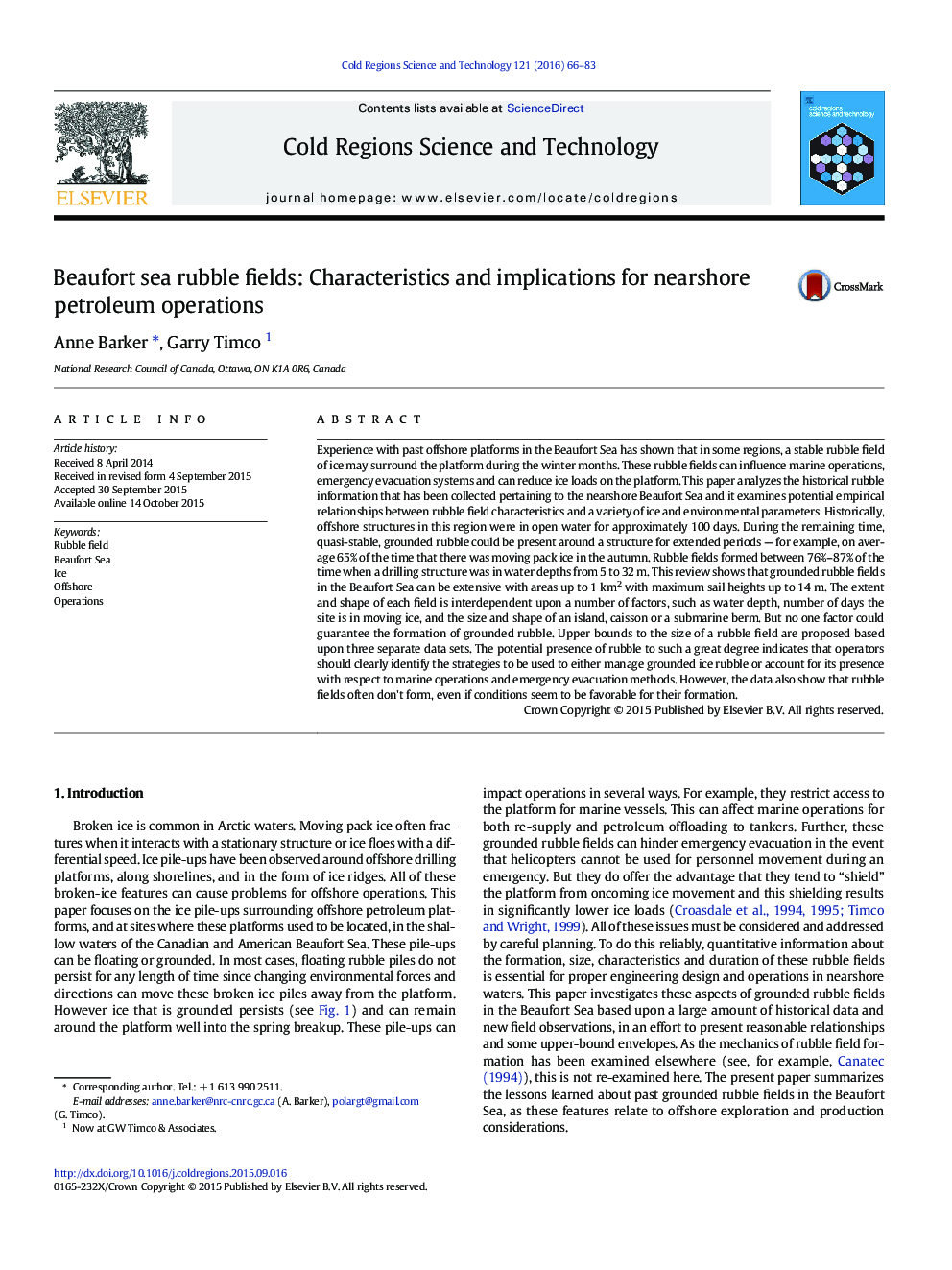| کد مقاله | کد نشریه | سال انتشار | مقاله انگلیسی | نسخه تمام متن |
|---|---|---|---|---|
| 6426649 | 1634443 | 2016 | 18 صفحه PDF | دانلود رایگان |
- Analysis of the formation, decay, shape and size of ice rubble fields
- Large grounded rubble fields have formed in water depths up to 32Â m.
- Grounded rubble fields in the Beaufort Sea can have areas up to 1Â km2.
- Their implications on offshore petroleum operations are described.
Experience with past offshore platforms in the Beaufort Sea has shown that in some regions, a stable rubble field of ice may surround the platform during the winter months. These rubble fields can influence marine operations, emergency evacuation systems and can reduce ice loads on the platform. This paper analyzes the historical rubble information that has been collected pertaining to the nearshore Beaufort Sea and it examines potential empirical relationships between rubble field characteristics and a variety of ice and environmental parameters. Historically, offshore structures in this region were in open water for approximately 100Â days. During the remaining time, quasi-stable, grounded rubble could be present around a structure for extended periods - for example, on average 65% of the time that there was moving pack ice in the autumn. Rubble fields formed between 76%-87% of the time when a drilling structure was in water depths from 5 to 32Â m. This review shows that grounded rubble fields in the Beaufort Sea can be extensive with areas up to 1Â km2 with maximum sail heights up to 14Â m. The extent and shape of each field is interdependent upon a number of factors, such as water depth, number of days the site is in moving ice, and the size and shape of an island, caisson or a submarine berm. But no one factor could guarantee the formation of grounded rubble. Upper bounds to the size of a rubble field are proposed based upon three separate data sets. The potential presence of rubble to such a great degree indicates that operators should clearly identify the strategies to be used to either manage grounded ice rubble or account for its presence with respect to marine operations and emergency evacuation methods. However, the data also show that rubble fields often don't form, even if conditions seem to be favorable for their formation.
Journal: Cold Regions Science and Technology - Volume 121, January 2016, Pages 66-83
